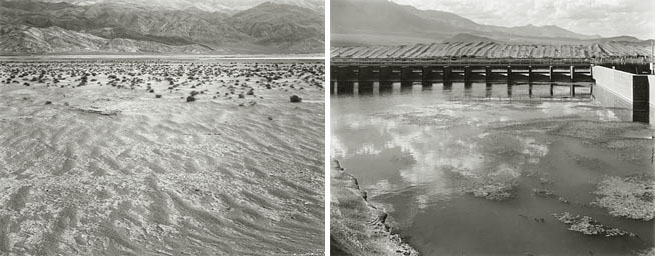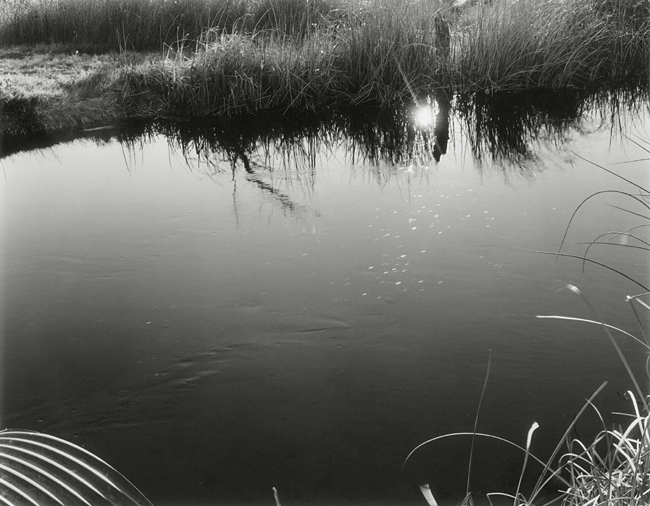Project Basho—Onward 2011 Reception
It was great to meet so many old and new friends at the opening on Saturday. I am super excited that the show is going to Tokyo in May, and congratulations to the two photographers selected to be flown to Japan to attending the opening.
There were close to 300 people who attended the opening, and there wasn't a chance to spend much time or room to really take in all the great work on display.
Here are a few of the snapshots I made that day. And a link to the Onward Blog for a list of all the winners.
New Work—Mojave Desert Artifacts
 Here is new work from my series of "artifacts" collected from an makeshift gun range in the Mojave Desert.
Here is new work from my series of "artifacts" collected from an makeshift gun range in the Mojave Desert.
I made a cross-country drive a few weeks ago, and was able to bring back crates of these collected objects to my studio near Philadelphia. In addition to photographing more of the new and much larger pieces, I will incorporate the actual objects to be shown alongside the large format platinum prints as kind of a mock-anthropological exhibition based on the culture of the desert southwest.
A large-format platinum print will be on view at Project Basho's Onward 2011 show opening today, with an opening reception on Saturday, Feb, 12. I will be there between 2:30 to 4:30, so stop by to have a chat and see some great photography by emerging artists from around the globe.
Project Basho— Onward 2011
 Mojave Desert Artifact #5, 2010
Mojave Desert Artifact #5, 2010
I am thrilled to announce that one of my new platinum prints from my Desert Artifact series was selected by Larry Fink for Onward, Project Basho's juried exhibition for emerging photographers. The opening reception is February 12, and the show runs through March 27.
Here is a video or people in Philadelphia announcing the selected photographers.
[youtube=http://www.youtube.com/watch?v=DJ8na4Dz4ME&fs=1&hl=en_US]
(1:16)
New Work— Mojave Desert Artifacts
These new photographs, 16" platinum-palladium prints made in the summer of 2010, are an extension of the aerial photographs I made of an off-highway recreation area in 2009. I am in the process of writing a more complete statement about the larger scope of the project, but for now, I will say that looking at the culture of recreation in the desert from the point of view of a future archaeologist and historian is an interesting way of exploring my own history within the context of the culture where I grew up, and, at the same time, not pass judgment of the people or the area.

First Real Platinum Print
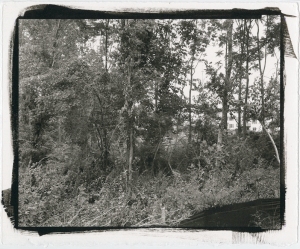 I have been learning to make platinum prints for the last few months, and this is one of the first that I am willing to call a final print
I have been learning to make platinum prints for the last few months, and this is one of the first that I am willing to call a final print
The problem I have with printing platinum is nothing I do is a straight print, and everything requires some buring or dodging for local control for the sake of balancing the print. I tried making digital burning and dodging masks printed on transparencies. But, I found that torn pieces of tracing paper and a glue stick work much better and is easier to alter as I'm printing.
UPDATE 12/12/12: You can read more about my adventures in platinum/palladium printing at my blog devoted to the subject at www.platinumprinting.wordpress.com/
New Print from the Lower Owens River Project
I finally had a chance to develop my films from my June trip out West. I even developed some other films that were sitting in a box for just over a year . . . This from my most recent trip to work on my series on the Lower Owens River Project. This was made near the culverts on the South side of Manzanar Reward Road. I have been mapping some of the images on Google Earth. Here is an image from Google Maps of what the area looked like before water was flowing. View Larger Map
What is Success Really?
Amy Stein wrote in her recent post about Jill Freedman, “It's great to see an artist get her due after so many years, but it's disheartening to know you can have the goods and still fall off the art world map.” I don’t know if a show at a gallery no one has ever heard of and a Times article constitutes “getting her due.” I am certainly not saying that she is not deserving of the recognition or that I am not happy for her. It is always good to see people get the recognition they deserve (the photographers not deserving are the ones I have a problem with . . . but who am I to judge . . . ) I have to ask myself, what are the real motivations and goals of this new breed of photographers? By this new breed I mean every photographer just out of college a lot of energy and a blog? What is their idea of success? a show? sales? a book? a posting on Jorg’s blog?
For a paycheck (if you can call it that) I work for two photographers, both of whom have several books and are collected in dozens of major American and European museums. They are both represented in a few galleries (like that really means anything), and had work at AIPAD this year. They are also now in their sixties with no savings and no healthcare and are uncertain where the money is coming from after the next few months. I guess the most important thing I have learned working for them is that it is always going to be rough. And, while good things may happen—sales, shows, books—the only rational reason for being a photographer is the irrational love and necessity of making pictures. I can’t speak for everyone, but the moment, my only goal is to be able to continue making pictures.
Michael P. Berman
Whenever I get a little disillusioned about the future of photography (ironically, it is mostly by reading blogs . . .) I head over to Luminous-Lint, and always find something to connect with and which inspires me to keep on keepin on. Today that find was Michael P. Berman. I had actually seen his book, Inferno, a year ago or so and didn’t recall his name immediately. I had to run to my bookshelf to make sure I don’t already have it before trying to order it tomorrow.
This is his from the introduction on Luminous-Lint from a series on the Gran Desierto.
The Gran Desierto is seven thousand square miles of desert on the western border of Arizona and Sonora. Sand dunes and a shield volcano rise out of the sea of Cortez and float into open basins and thin granite ranges. A single paved road cuts across the desert. The land is hot, dry and has one great natural resource - empty space.
Empty space is not a thing that is often left alone. For this reason, when I think of pristine landscapes, I think of the bombing ranges scattered throughout the American West, and of the fragments of wildlands along the border with Mexico. In these places the matrix of soil still exists; a tire track or footprint pressed into the earth remains there. This simple thing - intact soil - reveals a complexity I find nowhere else.
Cadiz, California or The Sights and Smells of the Middle of Nowhere
There is something about the space in the West that is rare to touch when making a photograph. I am not altogether sure if this one is successful, but I know when I made this that I was dipping into that peaceful experience of being out in the middle of nowhere, with nothing but creosote, jack rabbits, and rattlesnakes for miles around.
Really, Where do we go from here?
Someone recently told me I need to think about how to make my landscape photographs fresh so they are kept from being seen merely as anachronisms. In a way, I am not even sure I know what to do with that kind of criticism. Is the simple answer to photograph in color? And then what? I can’t help wonder what exactly is “contemporary” or “forward thinking” landscape photography, and who are the photographers pushing the envelope in that area? I am not even sure it can be pushed at all. How do you reach past the later Edward Weston photographs at Point Lobos or the Lee Friedlander photographs in the Sonora Desert? How can you push past the complexity of Jem Southam’s Painter’s Pool photographs.
This is a reoccurring subject for me, and I always come back to the same conclusion. They only way I can make these pictures fresh is by approaching the subject honestly, and without pretense. If I go out with the intent of creating something new, I will only succeed in creating something false. It is only in being completely absorbed in seeing in the moment that something altogether true can be created. I cannot perceive how anything I do will be seen in ten or twenty years, and at this point, I have to pretend not to care. With the constant pressure of “having to create something new” I might never make another picture ever again.
SPE and Portfolio Reviews
I just returned (sick) from the SPE National Conference held in Denver. It was great to have a chance to hang out with people I met last year, and there were some good lectures (although I did sleep through most of Edward Burtynsky’s talk—despite the fact that he is usually such a good speaker). Then there was the dance party. Even if I never picked up a camera again, and cursed everything remotely related to photographic education, I would still go just for the dance party . . . Then there were the portfolio reviews. The formal waiting-list-only-20-minute-career-making/breaking reviews, and the informal grab-a-table-and-show-your-prints-(or iPhone)-to-anyone-who-will-look reviews. Unfortunately, both types are equally important when it comes to having your work seen these days. This isn’t the 70s and there are now far too many photographers in the world for everyone to simply call up the curator at anywhere and ask to show them work. I say unfortunately because the importance of these reviews is more on getting a job, show, book, dealer, etc. than getting feedback about how to make better work. Everyone wants to be Alec Soth.
The problem with reviews is the importance placed on the 20 prints, the photographer’s agenda, the spiel, and the marketability of the work. At the end of my second day at SPE I was tired of showing my prints, and giving my little speech. It became more about the idea or the project rather than the pictures, and all I wanted to do was sit down and stop talking. I was perfectly happy to answer questions, but I was tired of trying to justify what to me should have been obvious. At one point I actually told someone “these pictures came from nothing more than an unashamed response to beauty.” Surely a no no to some people.
Cara Phillips made a recent post about being rejected from the Review Santa Fe event, and the nature of the competition process. The juror is undoubtedly going to be biased as to what he/she thinks is good or undeveloped or derivative. Competitions, and even portfolio reviews, in general, are all a crap shoot, and you can never tell who will like what on which day. I’d rather save my money to buy a plane ticket and a box film. At least I know it will be going to a good cause—my own sanity.
Pioneertown
Here is something newish. I was out West at the end of November photographing an area near where I grew up that is battling a Los Angeles Department of Water and Power project that plan to put up eight-some miles of high tension power lines through public and private lands—some of which are designated preserves. I hope to be again in the next few weeks to continue photographing the area.
The problem with trying to use photography to help stop the development in the area is that, even though it is a beautiful and magical landscape, it isn't a spectacular one. It is a subtle landscape, one without majestic peaks, or towering trees, but altogether beautiful in with its open, unblemished space and abundance of life.
In reality, does a run of powerlines really cause lasting harm to the environment? Maybe not, but the devastation would be that which comes next. The power lines would be something like the equivalent of the Broken Window or Ghetto Effect in a city. When the sight of the power lines becomes accepted, it isn't long until the area looks as disgusting as Apple Valley—Yucca Valley, my home town, is long down on its course toward the homogenized and sprawling western town—valuing popular fast food restaurants and frappuccinos over real community, and real culture.
Phillips de Pury Wishlist
We just got the Jan. 31 Phillips de Pury photograph catalog, and there are a few I will, but would rather not, have to live without. Here is my short list.
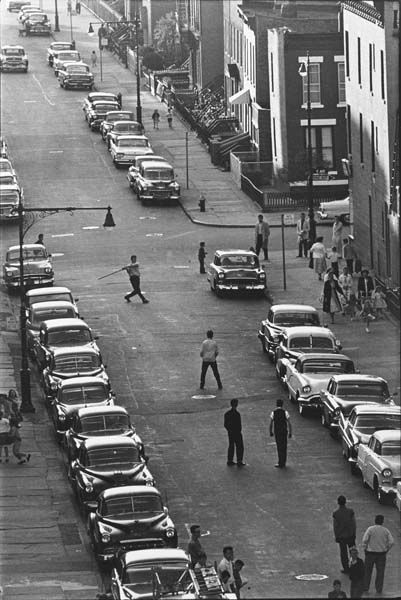
BRUCE DAVIDSON Brooklyn Gang (stickball game), 1959
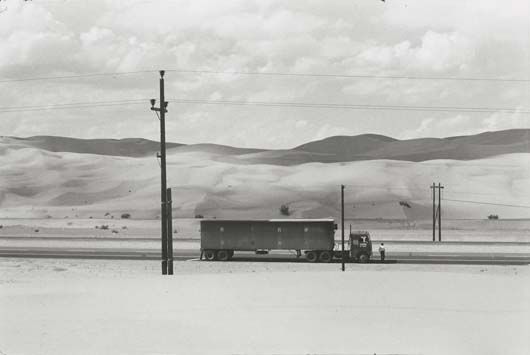
DANNY LYON Yuma, 1962
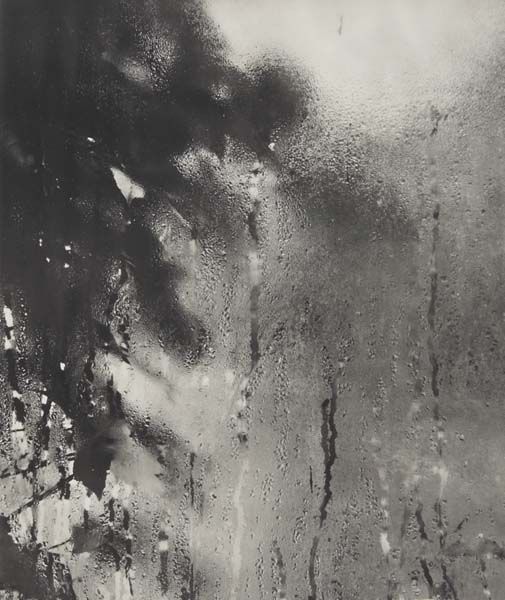
JOSEF SUDEK Mé okno, 1952 (a steal at only a $800-1200 estimate)
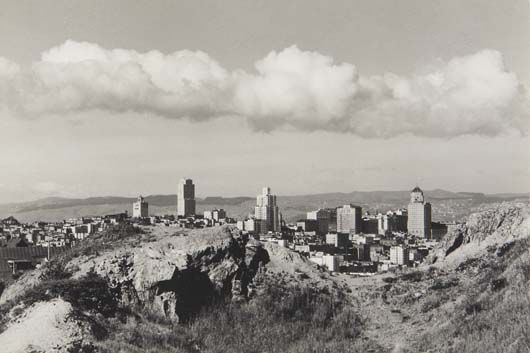
ANSEL ADAMS San Francisco from Red Mountain, 1933-1934 (one of the rare times I would actually look twice at an AA)
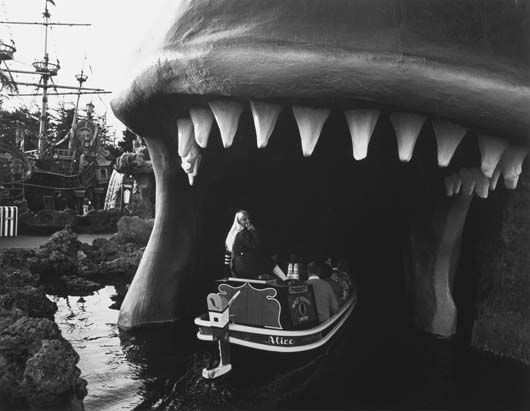
BILL OWENS Selected Images from Suburbia, 1972-1977
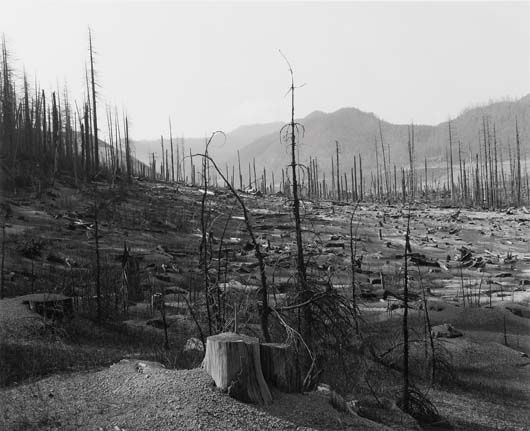
FRANK GOHLKE Selected Images, 1975-1982
Happy Christmas!
from the darkroom. Santa brought me my platinum/palladium chemistry a few days early. I am so excited about these negatives (and just the process in general) that I am taking every available minute to print and print and print. I should have a few scanned and up in a few days . . . But, until then, here are two of my all-time favorite Christmas pictures. The first is, of course, by Bill Owens. The second is a picture by Peter Goin I remembered from a lecture I saw more than five years ago.
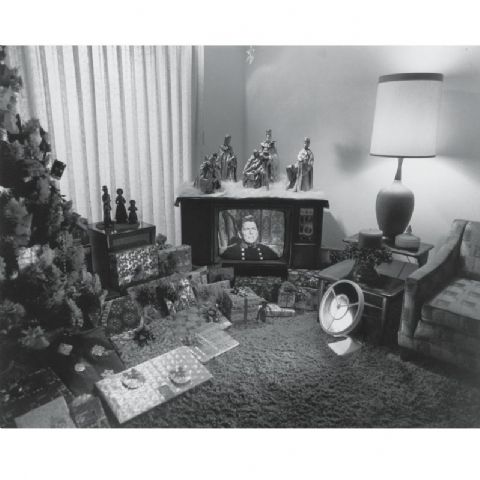
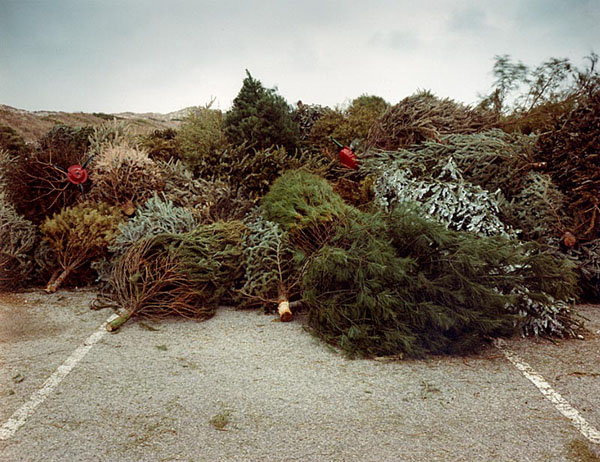
Daniel Shea, Appalachia, and Mountain Top Removal
I took a short trip to Centralia, Pennsylvania a few years ago, and while I didn’t spend much time photographing in the abandoned town, I spent a good deal of time driving around the area, and photographed in inactive areas of the few surface mines I could sneak into (sneaking with an 8x10 is not exactly easy). What I saw in the mines and the surrounding communities sparked an interest in conflict between the mining companies and the residents, as well as the physical damage to the environment, the hazards to the populations' health, and the larger implication for the world's climate. It was something I really intended to investigate further this coming winter and spring. So, when I first saw Matt Niebuhr's post about Daniel Shea's project on mountain top removal I was a little disappointed that he had beat me to it—which is a subject Cara Philips seems to have beaten me to writing about also . . . *
However, after spending a good deal of time on Daniel's blog this evening, I discovered that not only is he an excellent photographer, but his approach and dedication the subject, and to the project as a whole, is very admirable. I feel it is a level to which we can all hope to aspire.


Daniel Shea from the series: On coal and Appalachia
*NOTE: In general, I think the whole "I can't do this now because someone else did it first" argument is a crock. I feel, that if done honestly, whatever you do will be completely your own, The only time when something like that becomes an issue is when it comes time to selling it, or defending it in art school . . . (thank god I missed out on that—but that is a whole other can of worms . . . )
Special Holiday Print Offer
I am offering a special holiday promotion on all 8x10-inch contact prints from my website. This offer will last until the end of the year, and will include a gift of one 8x10-inch silver gelatin contact print when you purchase one at full price ($400 + shipping). This will help offset the cost of materials and future trips to continue photographing the Lower Owens River Project. More information and photographs from the first year of the project can be found on my Website.
First Night in the New Darkroom and More Lower Owens River Project Updates
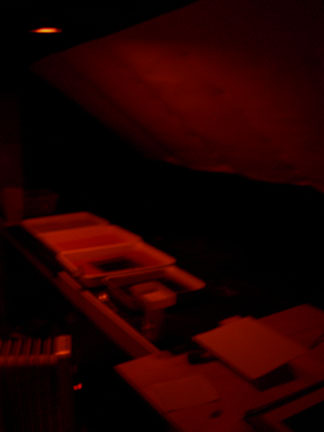
I have needed to build a new darkroom for every house I moved into for the last six or seven years. Some have been nicer than others–with running water and heating/air conditioning—and some have been in nasty, dank basements, or ones so small I needed to do a week of crunches before I could develop my films. Last night, I printed for the first time in my new darkroom I just set up in the attic. It does not have running water, and I have to carry it up a flight of stairs, and commandeer the bath tub to set up the print washer. But, it feels good, and because of that, I feel like I will be more productive than in some of my previous darkrooms.
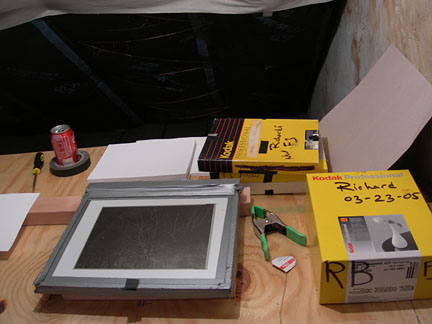
It kindof reminds me of the forts I used to build with friends as a little kid—using sheets, books, the coffee table—whatever was on hand. And that is the kind of the spirit that went into this one. It really made me reconnect with what got me so excited about photography in the first place. Not to sound cliche, but having an image appear on paper with nothing more than light and a few chemicals is sort of magical—even more so now that I am actually making beautiful prints (as apposed to the chalky gray ones my first time around). It also made me remember the reason I started using an 8x10 in the first place—the simplicity of it all.
Here are two of the prints I made last night. Both are from my most recent trip the Owens Valley.

Owens (dry) Lake near the Lower Owens River Project Pumpback Station and Delta Area. It will be interesting to see how this area changes in the next few years. There are no plans to refill the lake, and much if it is levied off for the dust mitigation program. There is, though, a small continuous flow of water to support the delta wildlife habitat area.

In the Lower Owens River Riparian habitat area. Near Lone Pine, California. November, 2007
Lower Owens River Project Update - December, '07
I finally got around to scanning some of the photographs I made on my trip in September, and a few of the ones I have printed from my most recent trip in November.
Also, I just updated my website with some of these new photographs, as well as added captions with a more specific location for each individual picture (you will have to click to the right of the image where is says "show / hide caption").
I hope to have the remaining negatives printed from this last year by the end of the month, so keep checking back for more updates.









